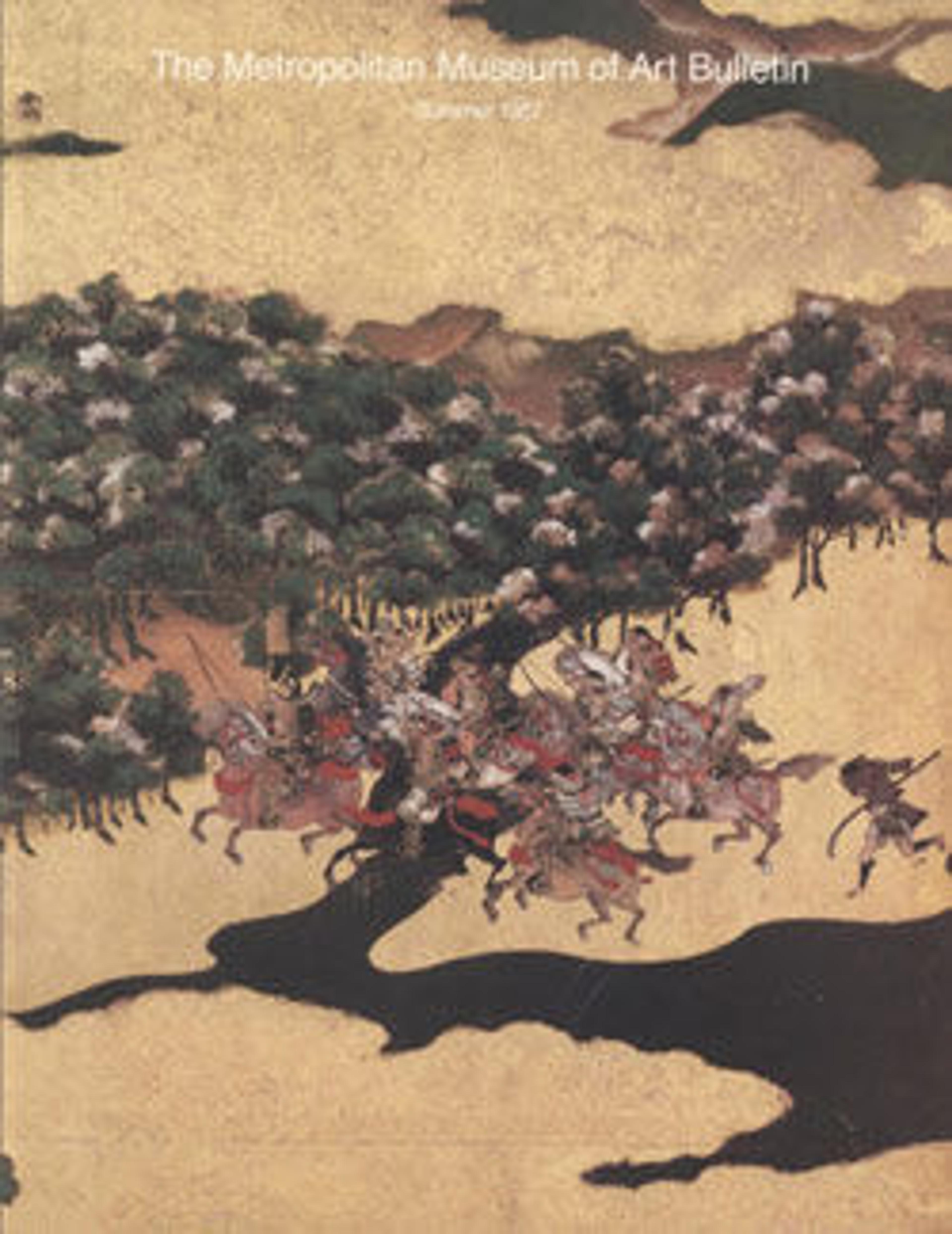Three-Footed Stand (Kongōban) for Buddhist Ritual Implements
For Esoteric Buddhist ritual prayer and incantations, a set of vajra pestles (kongōsho) and a bell (kongōrei) would be placed upon this bronze stand. The curved, leg-like supports are called “cat feet” in Japanese. The oldest known kongōban tray in Japan is believed to be the one preserved at Tōji Temple in Kyoto, which was brought back from China in the ninth century by the monk Kūkai, founder of the Shingon Buddhist sect in Japan.
Artwork Details
- 金剛盤
- Title: Three-Footed Stand (Kongōban) for Buddhist Ritual Implements
- Period: Kamakura period (1185–1333)
- Date: 13th century
- Culture: Japan
- Medium: Gilt bronze
- Dimensions: H. 1 1/2 in. (3.8 cm); W. 8 1/4 in. (21 cm); L. 11 1/4 in. (28.6 cm)
- Classification: Metalwork
- Credit Line: The Harry G. C. Packard Collection of Asian Art, Gift of Harry G. C. Packard, and Purchase, Fletcher, Rogers, Harris Brisbane Dick, and Louis V. Bell Funds, Joseph Pulitzer Bequest, and The Annenberg Fund Inc. Gift, 1975
- Object Number: 1975.268.171
- Curatorial Department: Asian Art
More Artwork
Research Resources
The Met provides unparalleled resources for research and welcomes an international community of students and scholars. The Met's Open Access API is where creators and researchers can connect to the The Met collection. Open Access data and public domain images are available for unrestricted commercial and noncommercial use without permission or fee.
To request images under copyright and other restrictions, please use this Image Request form.
Feedback
We continue to research and examine historical and cultural context for objects in The Met collection. If you have comments or questions about this object record, please contact us using the form below. The Museum looks forward to receiving your comments.
